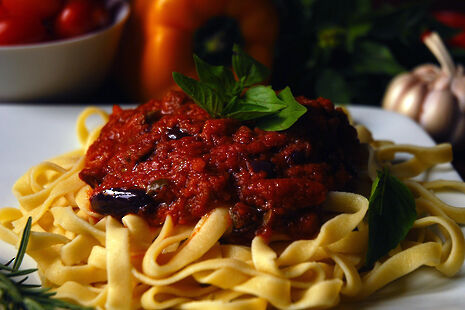“Offal-ly Good”
Crack open the Chianti and the fava beans – Food & Drink Editor Andrew Tindall finds there are more uses for liver than just alcohol abuse

It seems these days that any food writer worth their (Maldon) salt has written a scathing piece on the subject of eating meat. The world, they would have you believe, is split between pasty vegetarians and those self-described ‘carnivores’ who go around saying things like, "for every animal you don’t eat I’ll eat two"; things that fail even to be clichéd witticisms and demonstrate a poor grasp of mathematics. This has always seemed rather strange to a natural fence-sitter like me: I am unashamedly omnivorous. Yet I wonder why many ardent meat eaters are so squeamish about the realities of their protein source? This article isn’t an advertisement for tofu or for duck hunting – fortunately neither features heavily in my life. If anything, this is an opus to offal.
I might be alone in this sentiment, but I believe we really should eat more offal. For the uninitiated, "offal" is one of those endearing Olde-World terms for something that is of course utterly horrifying – in this case a catch-all for a multitude of organs and innards. Everything from lamb’s liver to ox tongue, from sweetbreads to chitterlings (don’t ask), are fair game on the table as far as I am concerned. Some say that you can eat everything on a pig except the squeal, and they wouldn’t be far wrong.
Of course, the 16-25 demographic isn’t traditionally a big offal market. Most of our encounters with offal have been aggressively hearty fare: Burn’s Night haggis and our grandmothers’ aggressive portioning of liver and bacon casserole, with far too much of the first component and not enough of the latter. This would be to ignore a multitude of quick, healthy and delicious dishes. Liver is transformed if flash fried, medium rare and melting, served either with a fresh tomato sauce or as the sumac seasoned Albanian delicacy Arnavut Cigeri. Kidneys too benefit from quick cooking, whether in a Twenties-tastic devilled kidneys on toast or made into a cream sauce for pasta. Combined with a high nutrient content, cheap price and intense taste, it seems criminal that many of use avoid it.
So why do we shy away from this superfood? Perhaps partly it is through the emergence of aspirational eating. Tripe used to be a mainstay in the North of England and has been unable to shake the flat-caps-and-whippets image when held up against cosmopolitan sushi bars and tapas. This association with poverty is certainly not shared by our European cousins, or by our restauranteurs who serve up sweetbreads and foie gras like they’re going out of fashion. This classism seems anachronistic in an age when it is deemed acceptable to enjoy opera, play lacrosse and even attend Cambridge if you have a northern accent.
More likely the reason many of us do not eat offal, I hazard, is squeamishness. Offal can be brutally honest with its nomenclature, and has a propensity to remind us that our dinner was once a living creature. This squeamishness is entirely unjustifiable, and is manifest of a life of denial. If we choose to eat meat we must accept that killing an animal for food is morally permissible, yet many of us find reminders that steak does not begin and end as a slab in a plastic tub utterly unpalatable. If that is our thinking, then we shouldn’t be eating meat at all.
 News / SU reluctantly registers controversial women’s soc18 December 2025
News / SU reluctantly registers controversial women’s soc18 December 2025 Features / Should I stay or should I go? Cambridge students and alumni reflect on how their memories stay with them15 December 2025
Features / Should I stay or should I go? Cambridge students and alumni reflect on how their memories stay with them15 December 2025 News / Dons warn PM about Vet School closure16 December 2025
News / Dons warn PM about Vet School closure16 December 2025 News / Cambridge study finds students learn better with notes than AI13 December 2025
News / Cambridge study finds students learn better with notes than AI13 December 2025 News / Uni registers controversial new women’s society28 November 2025
News / Uni registers controversial new women’s society28 November 2025









